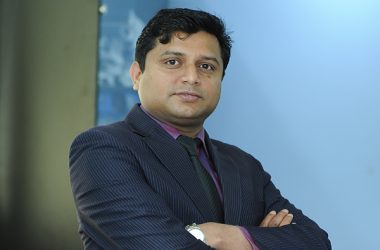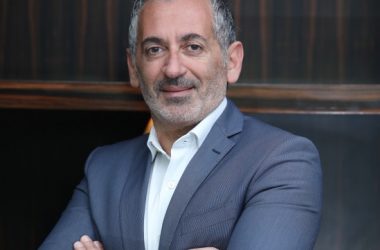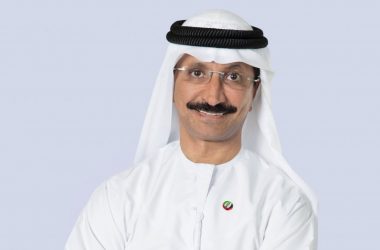
The Ministry of Foreign Affairs(MoFA) in the UAE is unifying mission websites and building a new network to ensure that there is a single, consistent image of the country that is projected outside.
The Ministry of Foreign Affairs (MoFA) in the UAE carries an important burden on its shoulders. As the UAE’s presence grows in countries across the world through several missions, the MoFA is responsible for presenting a unified image of the UAE to the outside world, and for ensuring that UAE’s citizens remain informed and connected. Both of these activities require a strong online presence.
“Tawajadi is what we call the services that we provide our citizens abroad. One of our strategic objectives is to efficiently serve our citizens abroad. We introduced this service where citizens can register based on the country that they are visiting and they can be in touch with the embassy in case of an emergency situation. They can register either through the main MoFA website or through a particular embassy’s website,” says Dr Saeed Al Dhaheri, advisor for information system at the Ministry.
“Our embassy websites also become the face through which the outside world perceives the UAE. They are the window through which people in foreign lands find information on the country. This was why it was imperative for us to present a unified vision of the UAE through our online activities,” adds Al Dhaheri. According to Al Dhaheri, the Ministry’s sites were not presenting a unified vision even a short while back. Each mission or embassy operated its own website and Al Dhaheri states, that there was no common structure, design or security across these ventures.
“The design was not always done in a professional manner for thesesites – as befits the representation of a government – and the management of these sites were distributed. The cost varied from country to country as well. Another important element was the security. We cannot compromise on security when it comes to having the presence of an embassy website that is hosted somewhere out that we are not sure about and there is no control about the hosting environment. Hacking incidents are not uncommon on government websites as well, and these put the entire government and its embassies reputations as risk,” says Al Dhaheri.
“Most of the services we currently offer are information-based services. We have information on visas, and we also have an application form that people can fill when requesting a visa. There are different information levels on this – costing, documentation that is necessary and legalisation of certificates. This is one of the most important services that the ministry offers abroad,” says Al Dhaheri.
The ministry is also planning on including e-services to this, where everything from visa application, submission and reviewal is conducted online, and requires the applicant to visit the embassy only to receive the visa stamp. The ministry is also planning an e-legalisation system, where certificates can be submitted for and legalised online, providing them a cost-effective way to deliver a service as well as provide statistics on number and delivery of certificates.
All these issues were highlighted, and the need for a unified online presence was felt when MoFA conducted a study in 2009 on their activities over the internet.
Unification
“This project started based on a need. We looked at the current state of what we had. We had our missions abroad – around 70 embassies and consulates – spread around the world. The number is increasing – we expect every year to have three to five embassies open missions around the world,” says Al Dhaheri.
The ministry began to look for options to unify the structure of the websites. They also started looking for a hosting environment, that would offer them a centralised management option and also provide the security that they required for the websites. “So we said we are going to host the embassies portal in a very secure environment, a trusted one and that has to be in the UAE We looked at all the major service providers in the country.
We visited their sites and researched the different options that they provided. The offer that came from eHosting DataFort (eHDF) was the best in terms of different factors, in terms of security, accessibility, in terms of services that were offered and in terms of cost,” says Al Dhaheri.
Once the hosting environment was decided, and the decision was made that eHDF would provide the ideal setup for the same, the ministry began to look into the content of these sites, and the management of the same. “The content can be broadly divided into two categories. There is the general content which is fixed for all embassies and that is related to investment, trade, tourisum and the culture of the UAE. This is the information on how we want to present ourselves to the world. This is the general content that is unified across all embassies,”says Al Dhaheri.
He adds, “The variable content is the one that is specific to each embassy. We give them the f lexibility to publish and manage this content – like the bilateral relations between the UAE and the country in question, information on the ambassador and the diplomatic team etc. We are giving a privilege for the embassy to publish their own content related to the country they are working in. But at the same time the general content remains in a unified, controlled environment.”
The ministry required a centralised content management system (CMS) for the sites, which would improve their effectiveness, and also enable people in different embassies to update to the CMS as and when necessary. Eventually, the ministry believed that the CMS would help in reducing complexity by doing away with different software, platforms and different CMSes. It would also help them reduce their cost.
“We went recruiting for this rather huge project, and went with Spica as a strategic partner to provide the technology, and manage the main MoFA website and the centralised content of the different embassies. Spica also helps in updation and maintenance of content on websites of embassies which are too small to have a dedicated personnel to create and upload content,” says Al Dhaheri.
The project required capabilities and certain resources from other parts of the ministry so IT partnered with the media department. At the ministry, IT is considerd a partner and an enabler more than just a support element. The media department is in charge of the websites and in charge of the content for the embassies. Information and content quality is reviewed by the media department before it is uploaded, and Spica works with the ministry to ensure that updation and uploading of the content is done effectively and is related to the particular embassy.
“Working with Spica and eHDF we have already launched three embassy websites on the new platform. There is the UK website, the German one (which is hosted in three languages – English, Arabic and German) and the Australian one. We are working on a plan and a timeline, and would like to have all our mission’s websites on the same platform by the end of the year. Even if we are not able to achieve this, we will ensure that at least the big and medium embassy sites are on the platform,” says Al Dhaheri.
According to him, the ministry is very happy with the service and support that it has received, and continues to receive, from Spica and eHDF. “Spica is proud to have partnered with the MoFA, UAE for the embassies project; The biggest challenge in the project was for all the embassies with all their diverse information and content to congregate on a single centralised multilingual platform, which was achieved by our collaboration with the ministry and our relentless pursuit to achieve the solution that satisfied requirements to the full,” says Bahaa Qasim, deputy GM at Spica.
Networking plans
Tasked as it is to support the business and enable growth, the 20 member IT team is constantly working to ensure that it meets its goals. “We are embarking on a new project that we are going to implement very soon called the Global One project – this will link all embassies abroad, and our branch offices in Dubai and Sharjah, with one single private secure network and the head office here. This network will have capability of providing centralised apps to the embassies abroad. If any of them need to access an app hosted here on our network, they will able to access it in a very secure way,” says Al Dhaheri.
He adds, “The global link is going to be provided through different means – through a leased MPLS connectivity, from global provider and also through satellite. In certain countries that lack good land infrastructure or connectivity, the network service will be offered through VSAT. We are talking here about providing voice, video conferencing, a global email environment, data transfer and app accessibility from the missions.”
MoFA is also working on ensuring that communications across this network remain secure and encrypted, such that it is perfect for use by higher leadership when they wish to have confidential communications. The value of this project was felt even more following the political disturbances in Egypt, Libya and Tunisia.
“Those countries were cut from the rest of the world when things started to happen as a means of trying to stop the communication, and we were affected by it. With the system that we will be building, we will have a total independent secure infrastructure that we believe will be working even in such instances where there is a break in communications. We will have satellite systems that are employing technologies like anti-jamming, which can facilitate and extend our reach to people and our missions abroad,” points out Al Dhaheri.
The project was started and the RFP was floated in 2009. The ministry plans to soon confirm a consortium – including local and global service providers – to start implementation of the network, which is scheduled to begin this year.
“Currently there is no direct connectivity between the ministry and the embassies. They have the internet link and access to the email environment through the same. We believe that implementing Global One will reduce a lot of cost associated with travelling, and improve the way we communicate between the ministry and embassies. People will have the confidence and trust to communicate via video conferencing and voice conversation. He will also be launching apps for the ministry and the embassies. People will have the confidence and trust to communicate via video conferencing and voice conversation. He will also be launching apps for the ministry and the embassies and the only way to access their will be through the Global WAN secure connection. The implementation of the network will be backed by a very strong SLA covering everything from response time to the accessibility of apps from remote locations,” says Al Dhaheri.
Streaming ahead
The ministry believes that the network would not necessitate a huge number of changes in the internal infrastructure, but does believe that extensions and upgrades will be necessary on the existing setup.
“We are considering virtualisation. We are not too keen on cloud computing, but we believe that virtualisation is one of the key technologies that can add to the efficiency of a data centre –using a minimum number of servers to achieve higher performance,” says Al Dhaheri.
The IT team and Al Dhaheri take the ministry’s efforts to improve and provide better services to its citizens and foreign missions very seriously. And with such dedicated effort, there is little doubt that they will succeed in their future efforts and projects.





